#black cohosh
Explore tagged Tumblr posts
Text
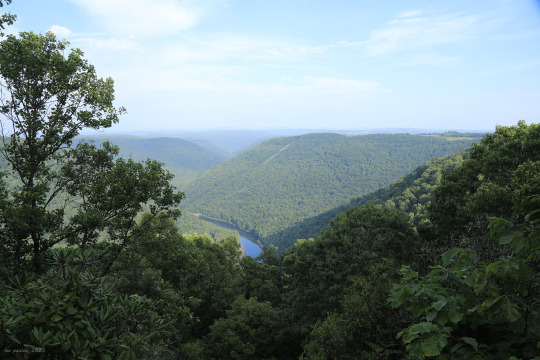

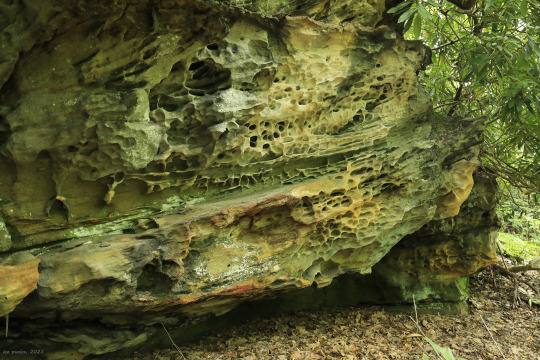

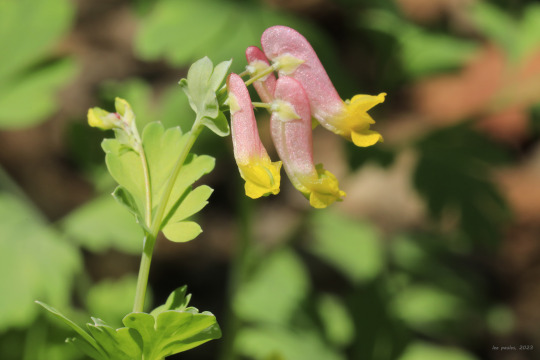
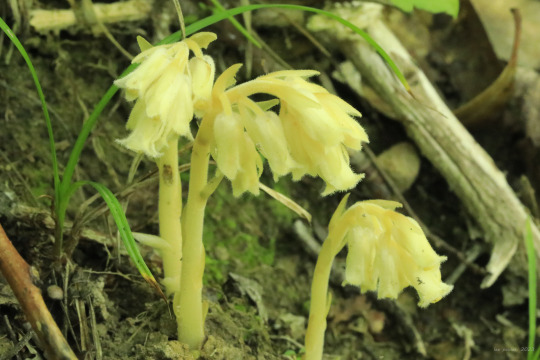


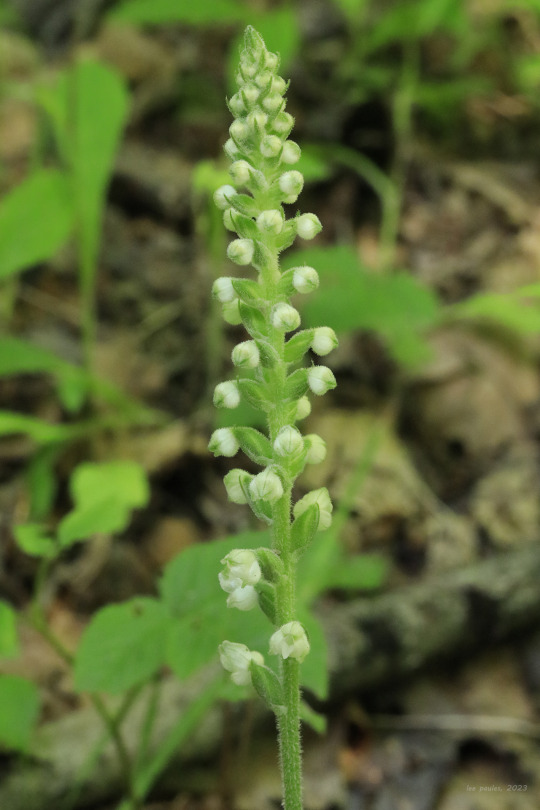
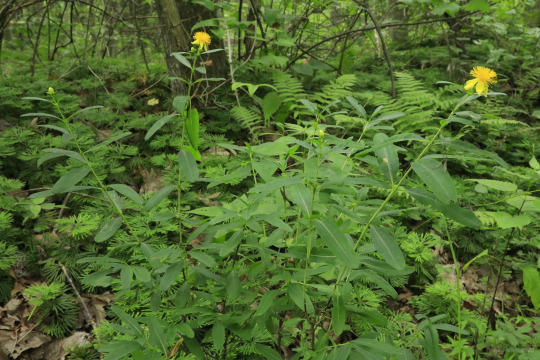







A hike in the Cheat River Canyon on a hazy, mid-summer day brings a great many rewards, both large and small.
From top: Fractured and pitted sandstone gives testimony to the canyon's ancient struggle with the elements; black cohosh (Actaea racemosa or Cimicifuga racemosa), whose towering flower spikes stalk the old woods like magical beings; the colorful rock harlequin (Corydalis sempervirens), an endangered fumitory that haunts the canyon's rocky outcrops; pinesap (Monotropa hypopitys), a parasitic plant closely related to Indian pipe; spotted St. John's wort (Hypericum punctatum), which is distinguished from the invasive St John's wort (Hypericum perforatum) by the numerous black dots on its flowers and leaves; downy rattlesnake plantain (Goodyera pubescens), a shade-tolerant terrestrial orchid that favors oak-hickory woods; shrubby St. John's wort (Hypericum prolificum), a mounding, deciduous shrub of open, sandy woods; orange-fringed orchid (Platanthera ciliaris), a stunning late summer beauty of Appalachia's moist meadows and open woods; a hummingbird clearwing moth (Hemaris thysbe) visiting a late-blooming milkweed; a silvery checkerspot (Chlosyne nycteis) drinking up the nectar of a butterfly milkweed (Asclepias tuberosa); an American green crab spider (Misumessus oblongus) stalking a black-eyed Susan for its next meal; a large milkweed bug (Oncopeltus fasciatus) being perfectly beautiful on a lazy summer day; and last but not least, a hulking patch of eastern Jack-0'-lanterns (Omphalotus illudens), which contrary to what field guides say have never glowed in the dark for me (I love the toxic little beauties nonetheless).

#appalachia#vandalia#west virginia#wildflowers#flora#summer#snake hill wildlife management area#cheat river canyon#chestnut ridge#fungi#insects#orchids#black cohosh#rock harlequin#pinesap#spotted st. john's wort#downy rattlesnake plantain#shrubby st. john's wort#orange-fringed orchid#hummingbird clearwing moth#silvery checkerspot#butterfly milkweed#american green crab spider#large milkweed bug#jack o' lantern#lepidoptera
174 notes
·
View notes
Text

Actaea racemosa / Black Cohosh at the Sarah P. Duke Gardens at Duke University in Durham, NC
#Actaea racemosa#Actaea#Cimicifuga#Cimicifuga racemosa#ranunculaceae#Black Cohosh#Black bugbane#Black Snakeroot#Fairy candle#Native plants#Native flowers#Plants#Flowers#Wildflowers#Nature photography#photography#photographers on tumblr#Sarah P. Duke Gardens#Duke Gardens#Duke University#Durham#Durham NC#North Carolina#🌺🌻
11 notes
·
View notes
Text
For the past few months I've been experimenting with using black cohosh to enable healthily having 0 estrogen and 0 testosterone (i.e. eunuch or castrate levels) and I wanna share the results! It was pretty promising so I think this could be cool as a new biological sex that people could transition to
#transgender#trans#hrt#diy hrt#trans diy#hormone replacement therapy#black cohosh#trans resources#lacunaposting
10 notes
·
View notes
Text

Black cohosh (Actaea racemosa)
5 notes
·
View notes
Text
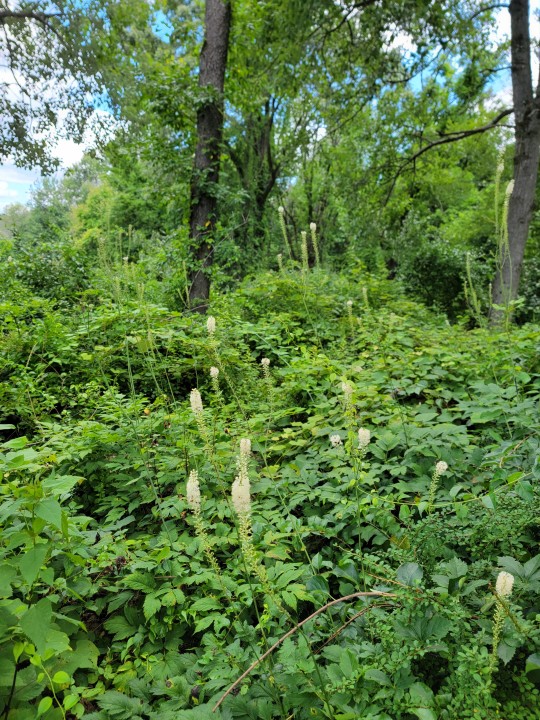
Black Cohosh in a Bramble Patch
#love this plant some people call it fairy wands#nature#original phography#photographers on tumblr#forest#black cohosh#njlocal#summer
16 notes
·
View notes
Text

Black Cohosh
-Common Sense Medical Adviser 1895
17 notes
·
View notes
Text
I Get This ONE Question ALL The Time
🌿 **Herbal Spotlight: Black Cohosh (Cimicifuga or Actaea racemosa)** 🌿 For all cycles of life, Nature offers remedies steeped in wisdom and tradition. Black Cohosh is the NUMBER ONE most talked about herb when it comes to perimenopause. For those who’re hesitant to use HRT (prescription estrogen therapy), or for those looking to treat their symptoms in a more natural way, herbal medicine can be…
#black cohosh#Cambridge#Health#herbal medicine#Kitchener#naturopath#naturopathic doctor#Naturopathic Medicine
0 notes
Text
The Ultimate Guide to Black Cohosh: Unlocking its Powerful Health Benefits

Black cohosh is a natural plant that has been used for millennia to promote women's health and alleviate menopausal symptoms. It is native to North America and has been used by Native Americans for therapeutic purposes, primarily to relieve hot flashes, mood swings, and menstrual cramps. Recent studies have indicated that black cohosh possesses immune-stimulating, antioxidant, and anti-inflammatory properties.
Black cohosh has been used for millennia by Native Americans to cure a range of diseases. When European immigrants arrived in North America, they began utilizing black cohosh to treat menopausal symptoms. It has traditionally been used to treat rheumatism and mental disorders.
Black cohosh's health advantages stem from its chemical composition. Active substances like triterpene glycosides, flavonoids, phenolic acids, and tannins work synergistically to promote health and alleviate discomfort. Triterpene glycosides have anti-inflammatory properties and interact with the body's estrogen receptors, making black cohosh useful for arthritis and menopausal symptoms.
1 note
·
View note
Text

From Seven Herbs: Plants as Teachers by Matthew Wood
#herbalism#botany#plants#plant medicine#black cohosh#teachers#education#holistic#health#magic#alchemy#chemistry#plant#plant life#plant lover#herbs#herb#study#Bible#Matthew wood
0 notes
Video
youtube
Missed Miscarriage 2023
#youtube#Missed Miscarriage 2023#Icelyn Odette#Missed Miscarriage#Miscarriage#Pregnant#Prenancy#Black Cohosh#Blue Cohosh#Missed Miscarriage Information#Missed Miscarriage Story#Missed Miscarriage Experience#Missed Miscarriage Video
0 notes
Text



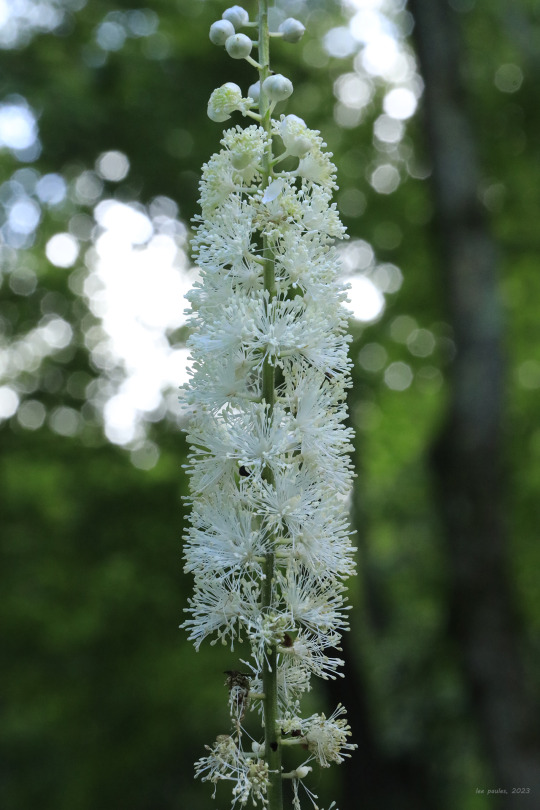
I suppose if any wildflower can be said to embody the bounty and energy of summer, it must be black cohosh (Cimicifuga racemosa, or Actaea racemosa). Anyone who has grown up in Central Appalachia will instantly recognize and connect with the towering "fairy candles" of this woods-dwelling perennial in the buttercup family - some might even suggest a spiritual bond exists between the people of the mountains and the plant. This isn't surprising - black cohosh has a long and storied history as a medicinal herb, dating back to the Native American tribes, who used an extract from its root to treat everything from musculoskeletal pain to snake bites, and continuing with the European settlers, who used it to treat the symptoms of menopause. While there is little evidence from clinical trials indicating the plant's efficacy in treating menopausal symptoms, higher quality studies are being urged and may yet prove the plant's value in supporting female reproductive health. Irrespective of its potential contributions to medicine, black cohosh is the living spirit of Appalachia's summer woods, and one of the most spectacular wildflowers of North America.
#appalachia#vandalia#west virginia#wildflowers#flora#summer#favorite summer wildflowers#traditional medicine#herbal medicine#herbal remedies#black cohosh#fairy candles#black bugbane#black snakeroot#snake hill wildlife management area#cheat river canyon
144 notes
·
View notes
Text






Digging through some old forges. Dimitri just being a little silly with his cat Cohosh.
2 notes
·
View notes
Text
"Despite the Central Appalachia ecosystem being historically famous as coal country, under this diverse broadleaf canopy lies a rich, biodiverse world of native plants helping to fill North America’s medicinal herb cabinet.
And it turns out that the very communities once reliant on the coalfields are now bringing this botanical diversity to the country.
“Many different Appalachian people, stretching from pre-colonization to today, have tended, harvested, sold, and used a vast number of forest botanicals like American ginseng, ramps, black cohosh, and goldenseal,” said Shannon Bell, Virginia Tech professor in the Dept. of Sociology. “These plants have long been integral to many Appalachians’ livelihoods and traditions.”
50% of the medicinal herbs, roots, and barks in the North American herbal supply chain are native to the Appalachian Mountains, and the bulk of these species are harvested or grown in Central Appalachia, which includes southern West Virginia, eastern Kentucky, far-southwest Virginia, and east Tennessee.
The United Plant Savers, a nonprofit with a focus on native medicinal plants and their habitats, has identified many of the most popular forest medicinals as species of concern due to their declining populations.
Along with the herbal supply chain being largely native to Appalachia, the herb gatherers themselves are also native [to Appalachia, not Native American specifically], but because processing into medicine and seasonings takes place outside the region, the majority of the profits from the industry do too.
In a press release on Bell’s superb research and advocacy work within Appalachia’s botanical communities, she refers back to the moment that her interest in the industry and the region sprouted; when like many of us, she was out in a nearby woods waiting out the pandemic.
“My family and I spent a lot of time in the woods behind our house during quarantine,” Bell said. “We observed the emergence of all the spring ephemerals in the forest understory – hepatica, spring beauty, bloodroot, trillium, mayapple. I came to appreciate the importance of the region’s botanical biodiversity more than ever, and realized I wanted to incorporate this new part of my life into my research.”
With co-investigator, John Munsell at VA Tech’s College of Natural Resources and Environment, Bell’s project sought to identify ways that Central Appalachian communities could retain more of the profits from the herbal industry while simultaneously ensuring that populations of at-risk forest botanicals not only survive, but thrive and expand in the region.
Bell conducted participant observation and interviews with wild harvesters and is currently working on a mail survey with local herb buyers. She also piloted a ginseng seed distribution program, and helped a wild harvester write a grant proposal to start a forest farm.
“Economic development in post-coal communities often focuses on other types of energy development, like fracking and natural gas pipelines, or on building prisons and landfills. Central Appalachia is one of the most biodiverse places on the planet. I think that placing a greater value on this biodiversity is key to promoting a more sustainable future for the region,” Bell told VA Tech press.
Armed with a planning grant of nearly half a million dollars, Bell and collaborators are specifically targeting forest farming as a way to achieve that sustainable future.
Finally, enlisting support from the nonprofit organization Appalachian Sustainable Development, Virginia Tech, the City of Norton, a sculpture artist team, and various forest botanicals practitioners in her rolodex, Bell organized the creation of a ‘living monument’ along Flag Rock Recreation Area in Norton, Virginia.
An interpretive trail, the monument tells the story of the historic uses that these wild botanicals had for the various societies that have inhabited Appalachia, and the contemporary value they still hold for people today."
-via Good News Network, September 12, 2024
#appalachia#united states#biodiversity#herbs#herbal medicine#herbalism#native plants#conservation#sustainability#sustainable agriculture#solarpunk#good news#hope
707 notes
·
View notes
Text
The Poison Path

The Poison Path is a unique and intriguing aspect of witchcraft that involves the use of psychotropic and toxic plants in rituals, spellwork, and other magickal practices. This ancient and often misunderstood path offers profound insights into the relationship between humanity and the natural world, emphasizing the transformative power of these potent botanicals. These plants are often referred to as 'baneful herbs' and have been used for centuries in various cultures for their powerful effects on the mind and body. The term "Poison Path" highlights the dual nature of these plants- they can heal or do harm, depending on the knowledge and intent of the practitioner.
History
The use of toxic plants in magick dates back to ancient times. Many traditional witchcraft practices involved the use of these potent herbs for ritual, divination, and healing. Plants like belladonna, henbane, and mandrake were commonly used by witches and herbalists for their medicinal and mind altering properties.
In his book, Veneficium: Magic, Witchcraft, and the Poison Path, Daniel A. Shulke delves into the historical and cultural significance of these plants. He explains that the knowledge of toxic plants was highly guarded and often passed down through generations of practitioners.
"Toxic plants have been used not only for their physical effects, but also for their symbolic and spiritual significance. They represent the balance of life and death, healing and harm."

Practices of the Poison Path
Practitioners of the Poison Path use toxic plants for various purposes, including:
• Rituals and Ceremonies- Baneful herbs are often used in rituals to induce altered states of consciousness, allowing witches to commune with spirits, deities, and otherworldly entities.
• Divination and Scrying- The mind altering effects of certain plants can enhance divination practices, helping seers gain deeper insights and visions.
• Healing and Protection- Despite their toxic nature, many of these plants have medicinal properties and are used in small, controlled doses for healing or protection.
Words of Warning
These plants have varying toxicities and some have the potential to sicken or kill. Do plenty of research before injesting, using herbs topically, or burning them. Then do some more research, just to be sure. With common sense, these botanicals make powerful additions to any working and are absolutely worth using. By approaching this path with respect, caution, and proper knowledge, one can unlock profound insights and enhance your magickal practices.

Plants on the Poison Path
• Aconite (Wolf's Bane)
• Lobelia
• Belladonna (Deadly Nightshade)
• Milkweed
• Datura
• Pokeweed
• Pointsettia
• Black Walnut
• Hellebore
• Snapdragon
• Yarrow
• Pennyroyal
• Lilac
• Dogbane
• Calamus
• Hemlock
• Sassafras
• White Snake Root
• Fleabane
• Fly Agaric
• Bloodroot
• St. John's Wort
• Henbane
• Rue
• Tansy
• Aloe
• Bittersweet
• Poppy
• Lily of the Valley
• Mandrake
• Elder
• Hartstongue
• Lobelia
• Wormwood
• Buttercup
• Arnica
• Licorice
• Loco Weed
• Black Nightshade
• Foxglove
• Eyebright
• Bleeding Heart
• Mistletoe
• Vervain
• Oleander
• Blue Cohosh
• Yew
• Broom
• Castor Bean
• Dragon's Breath
• Lady's Mantle
• Morning Glory
• Monkshood

#witch#magick#satanic witch#lefthandpath#dark#witchcraft#baneful witch#baneful magic#baneful#herbal magic#herbalism#herbs#spell work#spellwork#witchblr#witch community#eclectic witch#eclectic
89 notes
·
View notes
Text
a request written for a kind patron, under the prompt "catgirl seeks help in the practice of Stillness, as she wants to part time as a maneki-neko".
The shop bell jingles as Jun shoulders in, shaking snow from her cloak, huffing against the cold. “Welcome to the Golden Coil Medicine Shop, young miss! How may this one serve - oh, it’s you. Hi, Jun.” The doll running the counter slides out of its ramrod posture with an inelegant little yawn.
Jun snorts, hooking her hat onto the stand. “Aw, Ginseng, you’re not going to take my coat? I’m nearly a fully-certified witch now, y’know. You should keep it up with the young miss stuff, get yourself into the habit.”
Ginseng sticks out a teal-blue tongue in answer. “The usual, it assumes,” it says, turning to the dark wall of lacquered drawers behind the counter, each one’s contents labelled in print-perfect doll handwriting.
“The usual.” While Ginseng goes through the monthly routine, stepladder and scales and brown paper bag with label and seal, Jun’s eye wanders about the shop. Ginseng is always changing something or other about the decor in here - pre-Becoming, it was probably an interior designer or something - but the new addition this time is… really something. A poured-gold statue of a beckoning cat, the full shape and scale of a felinid woman kneeling upon a cushioned pedestal. Its upraised paw swings almost hypnotically, as if to the beat of an unheard metronome.
A folded paper bag is pushed across the counter by finely jointed fingertips. “Crushed extract-of-venus, five grams. Enriched black cohosh, ten grams. Thank you for your custom, young miss.” Ginseng curtseys just slightly too deep to be sincere, the sarcasm of gesture that dolls do best, and Jun snorts.
“See, now you’re getting it.” She folds the package into the witch-pocket beneath her coat, but she just - can’t take her eyes off that cat statue. “Hey, uh - what’s with the maneki-neko? It’s a bit, I don’t know…”
“Striking?” Ginseng says, hopefully.
“... Gaudy?”
“Hey!” says the statue, and Jun jumps about a foot in the air. “Rude!” Its tail switches about the base of its pedestal, aggrieved. In motion, the glinting gold of its skin reveals itself to be… a considerable amount of fur-safe paint?
“Oh, what the fffff –” a witch must never swear, “- Cleo?”
“Yes! Cleo!” says Cleo. “Aw, fuck, Jun, you really think I look gaudy?”
“Uh - no, no, you look - gold’s a good colour on you. What’s going on?”
“Oh, you two know each other?” Ginseng leans its elbows on the counter. “How droll. Jun, she’s the new part-timer. It’s really nothing to get worked up about.”
“Uh... huh. Cleo, I know you’re not getting the kind of money out of Ginseng that makes sitting on a pedestal all day worth it. What are you actually in this for?” A roll of glass eyes, as if Jun, having helped out here once or twice a week back before her workload got too heavy to manage, isn’t entirely qualified to opine on how Ginseng pays its shop’s part-timers.
“Well, y’see. I’m lucky now,” Cleo says, as if that explains it completely. Jun waits for some sort of elaboration on the thought, but she just takes advantage of the lapse in kayfabe to start preening her fur.
"The customers have been petting her," Ginseng supplies.
"Yeah! That too!” Cleo chirps.” C'mon, c'mon, you know you wannaaa-"
As she tilts forward on her knees, head seeking Jun’s touch, the silver-chased bell hung upon her neck ribbon stirs into a chime; a high, pure tone that is somehow, for the two seconds for which it hangs in the air, the most important thing in the shop. When the sound fades, Cleo has rocked back into her luck-beckoning pose, swishing tail and twitching ears statue-steady, her eyes cloudy with the kind of deep, thought-ending calm that freewilled creatures do not attain without magical intervention.
"I thought that bell looked familiar," Jun says.
"Then - then you know as well as this one does that it's perfectly harmless!" Ginseng says, detecting the baleful note of consequences in the junior witch’s voice.
"You have attached a category-four cursed object to our mutual friend - which I loaned you, from my mistress’ collection - so that she can part-time at your master’s shop as a good luck charm."
“She was so eager to start! And, and she’s been a huge hit with the customers, and you can’t expect a cat to master Stillness on her own overnight-”
“I’m telling your Miss.”
“Noooo, Juuun.”
“I am. You’re not wheedling me out of this, you wretch.”
“C’mooonnn, it’s fine, she likes it…”
“I should kick your ass myself! Another shift’s worth of this and she’ll Become right here in the middle of the shop, and then what are you going to do, huh, tell your Lady she just walked in and did that–"
65 notes
·
View notes
Text
A Baby Witch's First Grimoire
Grimoire Entry 14 - Protection Herbs

A:
Acacia
African Violet
Agrimony
Ague Root
Aloe
Althea
Alyssum
Amaranth
Angelica
Anise
Arbutus
Asafetida
Ash

B:
Balm of Gilead
Bamboo
Barley
Basil
Bay
Bean
Betony, Wood
Birch
Bittersweet
Blackberry
Bladderwrack
Bloodroot
Bluebell
Bodhi
Boneset
Briony
Bromeliad
Broom
Buckthorn
Burdock

C:
Cactus
Calamus
Caraway
Carnation
Cascara Sagrada
Castor
Cedar
Celandine
Chrysanthemum
Cinchona
Cinnamon
Cinquefoil
Clove
Clover
Club Moss
Coconut
Cohosh, Black
Cotton
Cumin
Curry
Cyclamen
Cypress

D-G:
Datura
Devil's Bit
Devil's Shoestring
Dill
Dogwood
Dragon's Blood
Ebony
Elder
Elecenpane
Eucalyptus
Euphorbia
Fern
Figwort
Fleabane
Frankincense
Galangal
Garlic
Geranium
Ginseng
Gorse
Gourd
Grain
Grass

H-K:
Hazel
Heather
Holly
Honeysuckle
Horehound
Houseleek
Hyacinth
Hyssop
Irish Moss
Ivy
Juniper
Kava-Kava

L-M:
Lady's Slippers
Larch
Larkspur
Lavender
Lekk
Lettuce
Lilac
Lime
Linden
Loosestrife
Lotus
Lucky Hand
Mallow
Mandrake
Marigold
Masterwort
Meadow Rue
Mimosa
Mint
Mistletoe
Molluka
Mugwort
Mulberry
Mullein
Mustard
Myrrh

N-Q:
Nettle
Norfolk Island Pine
Oak
Olive
Onion
Orris
Papaya
Papyrus
Parsley
Pennyroyal
Peony
Pepper
Periwinkle
Pilot Weed
Pimpernel
Pine
Plantain
Plum Purslane
Quince

R-S:
Radish
Ragwort
Raspberry
Rattlesnake Root
Rhubarb
Rice
Roots
Rose
Rosemary
Rowan
Sage
St. John's Wort
Sandalwood
Sloe
Snapdragon
Southernwood
Spanish Moss
Squill
Sweetgum

T-Z:
Tamarisk
Thistle
Ti
Toadflax
Tomato
Tormentil
Tulip
Turnip
Valerian
Venus' Fly Trap
Vervain
Violet
Wax Plant
Willow
Wintergreen
Witch's Hazel
Wolf's Bane
Yerba Santa
Yucca
Feel free to check out my master post for more information!
#magick#paganism#wicca#witchblr#witchcraft#baby witch#pagan#witch stuff#witch#witch community#witches#witchcore#A Baby Witch's First Grimoire#herbs#herbalism#herbalremedies#herbal witch#green witch#green wicca#eclectic witch#eclectic wicca#eclectic pagan#magic#correspondence
32 notes
·
View notes